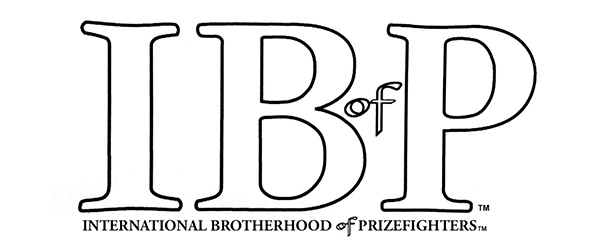Featured Articles
From Womb to Tomb, Sonny Liston’s Fate Was Seemingly Preordained

In Pariah: The Lives and Deaths of Sonny Liston, a remarkable 90-minute documentary on the rise and fall of former heavyweight champion Charles “Sonny” Liston, viewers are apt to discover that any preconceived notions they might have had about the baddest man in boxing history are, by turns, both legitimate and misinformed.
No matter what fight fans think they know of Liston, it’s a fairly safe bet more opinions will be shaped by watching the Nov. 15 premiere of Pariah (9 p.m EST and PST) on Showtime. While questions about how and why Liston died remain a source of speculation, the disparate elements of his conflicted, turbulent life suggest that much of the actual truth about him, good and bad, is forever destined to be a riddle wrapped in a mystery inside an enigma.
Inspired by The Murder of Sonny Liston: Las Vegas, Heroin and Heavyweights, a book authored by Shaun Assael, the documentary examines the pros and cons of the oft-arrested, twice-incarcerated, mobbed-up wrecking machine who did not so much defeat opponents as to eviscerate them. Viewers – especially white people old enough to be familiar with the era in which he rose to prominence — are left to decide for themselves if Liston really was or deserved to be representative of their deepest fears, or a frequent victim of circumstance who wanted nothing more than some positive acceptance instead of the widespread loathing to which he had become accustomed.
But the journey from villain to hero is never smooth for someone with Liston’s checkered background, and especially so given the social unrest of the late 1950s and early ’60s. Hasan Jeffries, a black assistant professor of history at Ohio State University, said that Liston, a product of the Jim Crow South, was widely considered to be “America’s worst nightmare” and a “literally dangerous Negro,” someone who was “unafraid of white people as demonstrated by his consistent encounters with police.”
When he returned to his adopted hometown of Philadelphia after his title-winning, one-round blowout of popular but hopelessly outclassed champion Floyd Patterson, and discovered that there was no one at the airport to celebrate his triumph or to finally recognize him as something more than a glowering bully with a lengthy rap sheet, an increasingly bitter Liston decided that he might as well settle for being who and what the masses thought he was instead of trying to change millions of minds that had long since been made up.
Liston’s sudden embrace of his malevolent reputation reminded me of a line of dialogue from The Vikings, a 1958 movie in which a fierce Norse warrior, played by Kirk Douglas, is unable to win the affection of a captured British beauty played by Janet Leigh. “If I can’t have your love,” Douglas, as Einar, defiantly tells Leigh’s Morgana, “I’ll take your hate.”
Not that Liston, the 24th of 25 children born to an Arkansas sharecropper who was less a father than a tyrannical family overseer, ever chose to be hated. But neither was he apt to be idolized in the manner of, say, Joe Louis, Rocky Marciano or the man who would ultimately succeed him upon the heavyweight throne, Muhammad Ali. Liston, who could neither read nor write, lacked the basic communication skills that might have gained him a bit more favorable press, and his personification of danger was accentuated by a withering glare that left more than a few opponents frozen with fear before the opening bell rang.
“He was a real badass, a real menacing force,” Mike Tyson, a future heavyweight champion with a similar gift for intimidation, said of Liston. “Sonny could pull it off. I could pull it off. Not a lot of people could pull it off.”
It would be a disservice to Liston, however, to say that the main weapon in his arsenal was a gift for winning staredowns. Scary as Liston was simply by standing there, he was so much more so when he began whaling away at flesh and bone as might a burly lumberjack chopping down a thin tree. Forget so-called experts’ arbitrary rankings of the hardest punchers ever to lace up a pair of padded gloves; Liston’s knockouts were spectacular for their savagery, toppled foes crashing to the canvas as if they would never again get up. He needed only 69 seconds of the first round to put a decent journeyman, Wayne Bethea, down and motionless, in the process dislodging 16 of Bethea’s teeth. Nobody in the fight game supplied oral surgeons with more patients in need of emergency treatment than Sonny Liston.
By reputation, Liston, who compiled a 50-4 record with 39 KOs from 1953 to 1970, was a huge heavyweight for his era, but he stood just 6-foot-1 and weighed in around 215 pounds during his prime. Then again, Liston’s unextraordinary height and heft were not his measurements of consequence. His 86-inch reach, those incredibly long arms extending down to massive fists the size of a catcher’s mitt, were. Liston might have had the most devastating jab ever, as accurate as Larry Holmes’, only harder. Sonny could use that jab as a range-finder when necessary, but its concussive force was such that the numbers-crunchers at CompuBox today would be obliged to categorize it as a power punch. He could knock a man down and even out with that jolting jab, and sometimes did.
“Sonny’s left jab was a nose-cracking, teeth-busting experience,” offered Randy Roberts, a boxing buff and assistant professor at Purdue University who serves as one of the documentary’s talking heads. “They said getting hit with his jab was like getting hit with a pole.”
Liston’s penchant for destruction inside the ropes, had he not come along when he did, might have made him as rich and celebrated as Tyson would become 50 years later. So why wasn’t he? Liston had so many brushes with police that fibers from their blue serge uniforms clung to him like permanent lint. Not only was he arrested 19 times and did two prison stretches, but cops in St. Louis and Philly, cities that for a time served as his home bases, tracked his movements as a meteorologist would an impending storm. Perhaps all that extra attention was justified at times, but Liston’s freedom of movement was so inhibited that he often felt as if he were somehow encased in an invisible jail.
“There was nothing they didn’t pick me up for,” Liston once complained. “If I was to go into a store for a stick of gum, they’d say it was a stick-up.”
It was to Liston’s benefit and detriment to have turned his career over to organized crime figures Frankie Carbo and Blinky Palermo, boxing manipulators who had enough clout to not only advance his career but to get him sprung earlier from prison sentences that would surely have been longer were he not a possible future heavyweight champion. The downside of the arrangement is that the Feds spent a lot of time looking into the nefarious activities of Carbo and Palermo, which meant they also had a thick dossier on Liston. It did not escape the FBI’s attention that the non-boxing “jobs” for Liston lined up by his influential backers to gain him early release were something less than fully above board.
“He’s a leg-breaker for the mob, he’s an alley-dweller,” Roberts noted. “Sonny never walked on well-lit streets. Sonny lived in darkness.”
Maybe so, but there are more than a few boxing historians who have tried to determine what made Liston tick. A case can be made that inside those shadows in which he was obliged to exist there was a better, brighter version of himself almost desperate to break out.
“I don’t think the general public ever knew the real Sonny Liston,” opined Nigel Collins, former editor of The Ring magazine. “They knew the persona, the thug-like guy who just knocked everybody out, was associated with the mob and had been in jail. He wasn’t really that. That was a front. That was what he needed to protect himself, and also to intimidate his opponent. He was a very sensitive person. He could be hurt easily.”
That description of Liston was seconded by his wife, Geraldine, who described her husband as “a good man and a kind man, and worthy of a chance to contribute to society.”
To Sonny’s way of thinking, his ticket to validation as a human being was to gain the heavyweight championship then held by Floyd Patterson, a nice guy but lesser fighter whom Roberts called the “Sidney Poitier of boxing.” It wasn’t necessarily a compliment. Patterson’s shrewd manager-trainer, Cus D’Amato, had managed to supply Patterson with a steady stream of marginally qualified and eminently beatable challengers, but D’Amato wanted no part of Liston. The first of the two title bouts between Patterson and Liston came about only because Floyd, embarrassed by the spreading public perception that he was more protected than the gold in Fort Knox, demanded that Liston be given the chance at the title he had earned with those ham hock fists.
Jerry Izenberg, the esteemed sports columnist for the Newark Star-Ledger, visited Patterson’s well-manicured rural training camp before checking in on Liston’s, which was urban, grittier and unquestionably better suited to a reformed leg-breaker on a mission.
“He’s got two chances – slim and none,” Izenberg said in recalling his impressions of Patterson’s preparations for a fight few gave him a chance to win, or even to finish in an upright position. After Izenberg got a glimpse of Liston’s laser-beam focus, he amended his original assessment. “I’m saying those two chances for Floyd, slim and none? Slim just went out the door.”
The fight, such as it was, took place on Sept. 25, 1962, at Chicago’s Comiskey Park. Custer had a better chance at the Little Bighorn than Patterson did against Sonny. The annihilation required only 2 minutes, 6 seconds to complete, whereupon the humiliated Patterson snuck out of the arena in disguise, and Liston returned to Philadelphia, foolishly expecting the hero’s welcome he believed to be his reward for all those hard years of poverty and dues-paying.
“There are people who don’t want me to be there (as champion),” Liston upon attaining the title. “Regardless of them, I intend to stay there and I promise everyone that I will be a decent, respectable champion.”
Jack McKinney, then the Philadelphia Daily News boxing writer and the only media person in town who had earned Liston’s trust, called City Hall to see if a group of dignitaries could be on hand to greet the new champ. But there was no brass band at the airport, no cheering fans, no smiling politicians to pat the not-favorite son on the back and say that all had been forgiven. Nor was the reaction to his seemingly improved lot in life any warmer elsewhere.
“I didn’t expect the President to invite me into the White House, but I sure didn’t expect to be treated like no sewer rat,” Liston grumbled.
The chip on his shoulder now the size of a log, Liston showed up for the July 22, 1963, rematch at the Las Vegas Convention Center more determined than ever to cruelly demonstrate his superiority over Patterson and any other heavyweight that might be foolish enough to share the ring with him. Like Kirk Douglas’ Einar, if he was unable to win the public’s love, he would revel in its hate. Again Patterson was destroyed in the first round, the fight a virtual replica of the original.
“The only difference,” Collins said of the do-over, “is that it lasted four seconds longer.”
No one could have known it at the time, but the second demolition of Patterson would be Liston’s only winning defense of the title he had so relentlessly sought and, many figured, would hold in a vise-grip for at least the next five years. But even before Liston left the ring, a conqueror beyond compare, an audacious young upstart entered his space and loudly berated the newly crowned champion. His name, at least at for the time being, was Cassius Clay.
“I want you! I want you! You ugly!” Clay yelled at a seemingly bemused Liston, who regarded the impudent kid as he might a Martian who had just stepped off a spaceship. But Clay kept up his campaign to force a showdown with Liston where it counted. In the weeks that followed, he repeatedly demeaned Liston in newspapers and on TV. And if those affronts weren’t enough to produce the desired effect, Clay went so far as to physically confront the man he had dubbed the “big, ugly bear” in Vegas, a mob town to which Sonny had relocated and enjoyed a level of tolerance he had been unable to find in St. Louis or Philly. Clearly Liston would have no peace of mind until he did unto this loudmouth what he had twice done unto Patterson. He was a 7-to-1 favorite to do just that when the fight took place on Feb. 25, 1964. Some media members were concerned that Liston was determined to, and quite capable of, literally beating Clay to death.
But on a night where one legend died and another was birthed, Clay fought through a tense fourth round in which an astringent that had gotten into his eyes and made it difficult for him to see. Flashing the speed of hand and foot for which he would become renowned, Clay, his vision cleared, increasingly took control of the contest until Liston, gashed below the right eye and with a large mouse under his left eye, declined to come out for the seventh round. He cited a shoulder injury as the reason he was unable to continue.
In boxing, it is one thing to lose. It is quite another for a fighter, especially a champion of Liston’s magnitude, to surrender. Author Robert Lipsyte was among those who took him to task, saying, “If you’re heavyweight champion, you die trying. But he just kind of sat there. He gave up. Why did he give up? This, of course, is the mystery at the heart of it all. Did he give up because he was in such terrible agony he couldn’t move? Did he give up because he suddenly realized he couldn’t win this fight? Did he give up because he’d been paid to dump it? Who knows?”
But the plot, as the saying goes, soon thickened. Cassius Clay announced the following day that he was a member of the Nation of Islam, more commonly known as the Black Muslims, and now wanted to be known as Cassius X, a stopover on the way to a more permanent identification as Muhammad Ali. It was as if he had become the bad guy, at least to a segment of the American populace, with the disgraced Liston now viewed as the possible savior and re-capturer of a championship that had fallen into presumably radical hands. The rematch was to take place on June 25, 1965, in Lewiston, Maine, a sleepy outpost (the town was mostly known for its factory that manufactured bedspreads) near the Canadian border which stepped up when Boston, the originally announced site, bailed.
“Liston got more cheers than Ali,” recalled journalist Don Majeski of the fighters’ respective ring walks. “They finally said, `Well, between these two, the lesser of the two evils is Sonny Liston,’ so we’ll cheer this ex-convict who lost his title on his stool rather than to root for a guy who says he’s a Black Muslim separatist. (Liston) enjoyed that. He sort of basked in that kind of glory for the first time in his life.”
Or he did, for a fleeting moment.
“But then what happened was the Kennedy assassination of boxing,” Majeski continued. “Everyone has an idea, but nobody knows the truth.”
What happened was that Ali landed (or missed) with a flicking right hand in the first round that sent Liston careening to the canvas, where he floundered around like a reeled-in fish tossed onto the bottom of a bass boat. To this day there are those who are convinced that Liston, for reasons unknown, took a dive, an argument countered by Ali loyalists who insist that the punch was legitimate and powerful enough to fell even a big, ugly bear.
Assael straddles no fences on the issue. His position is that Liston purposefully went into the tank.
“Why fix the fight?” Assael asks, rhetorically. “That’s where the secret percentage theory comes in, which is that Sonny had agreed to an under-the-table deal to get a cut of Ali’s future earnings if he went down. It’s exactly what a mobster would have done, and it’s exactly what I think Sonny did do.”
In any case, Liston – whom former fight fixer Charles Farrell insists was “the greatest heavyweight who ever lived … a bonafide monster” – had taken a downward turn from which there could be no recovery. He would fight 16 more times over the next five years, winning 15, but he was, as the documentary’s title attests, a pariah.
“After the second fight (with Ali), Sonny’s a dead man,” Assael said. “He’s not only just reviled, he can’t even get a job. Boxing commissions won’t license him … Sonny was toxic. I mean, really radioactive.”
The mystery of Sonny Liston took an even more tragic turn when his decomposing body was discovered at his Las Vegas home on Jan. 5, 1971. An autopsy indicated his death might have owed to an overdose of heroin, which those who knew him well insist could not have been the case because Liston was almost paranoid in his fear of being stuck by a needle.
“The medical examiner called it natural causes, but nobody around Sonny believed that,” Assael said. “Everybody believed he was murdered. So many people wanted Sonny dead. The only question was, who got to him first?”
Larry Gandy, a Vegas cop, was among those who saw the body. “It didn’t even look like Liston, he’d been dead for so long,” Gandy said. “He’d been dead four or five days. He was bloated, full of methane gas. It really made me sick to my stomach because he’d been such a predominant figure in the sports world. It was a terrible, disrespectful way for him to go.”
Gandy’s expression of compassion might or might not be genuine since the documentary hints at the possibility of his having some measure of culpability in Liston’s demise, in mob retaliation for Liston’s final fight, on June 29, 1970, in which he defeated Chuck “The Bayonne Bleeder” Wepner on a ninth-round stoppage brought about by numerous and severe cuts to Wepner’s well-sutured face.
“Liston was not brought into that fight to win,” said Farrell. “I believe the Wepner fight was a deal that went terribly, terribly wrong.
“As the rounds went by, Liston couldn’t find a place to fall, Wepner’s increasingly beat up and eventually the fight gets stopped because of the cuts. Liston won the fight. It’s a series of miscommunications where nobody does exactly what they’re supposed to do. The mob lost a lot of money and there were dire circumstances.”
In the end, all that is left of Sonny Liston is a headstone in a Las Vegas cemetery and a raft of recriminations and might-have-beens. For every boxing historian who includes him among the greatest and most fearsome heavyweight champions of all time, there is another who sees only the warts and blemishes of perceived transgressions committed both inside and outside the ring. The International Boxing Hall of Fame seemingly leans more toward the former, as evidenced by Liston’s 1991 induction.
“You can always make a case for someone’s exclusion,” Bert Randolph Sugar, then the publisher of Boxing Illustrated, told me for a story I did on Liston’s posthumous enshrinement by the IBHOF. “It depends on how moralistic you want to be. But remember, this is boxing we’re talking about.”
Upon reflection, it is somewhat curious that Ali, who generated so much fear and mistrust for the rematch with Liston in Lewiston, and for some time thereafter, evolved into such a sympathetic and beloved figure, widely acknowledged as the GOAT (Greatest of All Time). Also, upon reflection you have to wonder how the career paths of he and Liston would have proceeded had a semi-blinded Ali’s demand that trainer Angelo Dundee cut off his gloves before the fifth round of his first fight with Liston been granted.
What is indisputable is that boxing, so rich in stories about great and flawed fighting men, needs more documentaries of this quality that peer behind the curtain of what fans only see on fight night, giving insight into the whole person. Then again, how many prospective subjects are capable of taking viewers on the kind of roller-coaster ride that Sonny Liston’s tumultuous journey did?
“There was one thing that Sonny was better at than boxing, and that was compartmentalizing himself,” Assael said. “He could be a loving husband, he could be a womanizer, he could be a criminal, he could be a boxer. That’s what he was a master at – boxing and being able to lead so many different lives. There were so many men inside that one man.”
Check out more boxing news on video at The Boxing Channel
To comment on this story in The Fight Forum CLICK HERE
Featured Articles
Ramon Cardenas Channels Micky Ward and KOs Eduardo Ramirez on ProBox
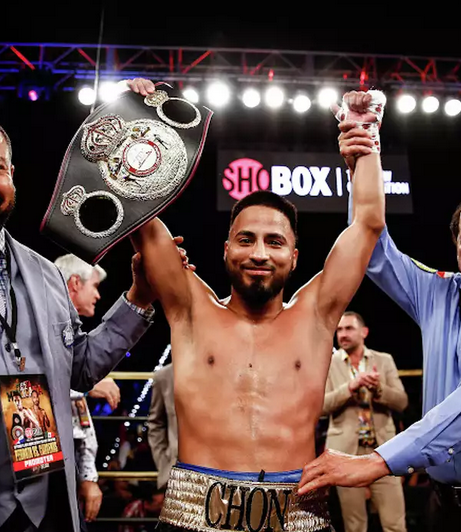
The Wednesday night bi-monthly series of fights on the ProBox TV platform is the best deal in boxing; the livestream is free with no strings attached! Tonight’s episode was headlined by a super bantamweight match between San Antonio’s Ramon Cardenas and Eduardo Ramirez who brought a caravan of rooters from his hometown in Guaymas, Sonora, Mexico.
Cardenas, coached by Joel Diaz, entered the contest ranked #4 by the WBA. He was expected to handle Ramirez with little difficulty, but this was a close, tactical fight through eight frames when lightning struck in the form of a left hook to liver the from Cardenas. Ramirez went down on one knee and wasn’t able to beat the count. It was as if Cardenas summoned the ghost of Micky Ward who had a penchant for terminating fights with the same punch that arrived out of the blue.
The official time was 1:37 of round time. Cardenas improved to 25-1 with his14th win inside the distance. Ramirez, who was stopped in the opening round by Nick “Wrecking” Ball in London in his lone previous fight outside Mexico, falls to 23-3-3.
Co-Feature
In an upset, Tijuana super welterweight Damian Sosa won a split decision over previously undefeated Marques Valle, a local area fighter who was stepping up in class in his first 10-round go. Sosa was the aggressor, repeatedly backing his taller opponent into the ropes where Valle was unable to get good leverage behind his punches.
The 25-year-old Valle, managed by the influential David McWater, was the house fighter. This was his 10th appearance in this building. He brought a 10-0 (7) record and was hoping to emulate the success of his younger brother Dominic Valle who scored a second-round stoppage of his opponent in this ring two weeks ago, improving to 9-0. But Sosa, who brought a 24-2 record, proved to be a bridge too high.
The judges had it 97-93 and 96-94 for the Tijuana invader and a disgraceful 98-92 for the house fighter.
Also
In a fight whose abrupt ending would be echoed by the main event, 34-year-old SoCal featherweight Ronny Rios, now training in Las Vegas, returned to the ring after a 22-month hiatus and scored a fifth-round stoppage over Nicolas Polanco of the Dominican Republic.
A three-punch combo climaxed by a left hook to the liver took the breath out of Polanco who slumped to his knees and was counted out. A two-time world title challenger, Rios advanced to 34-4 (17 KOs). Polanco, 34, declined to 21-6-1. The official time was 0:54 of round five.
—
The next ProBox show (Wednesday, May 8) will have an international cast with fighters from Kazakhstan, Japan, Mongolia, and the United Kingdom. In the main event, Liverpool’s Robbie Davies Jr will make his U.S. debut against the California-based Kazakh Sergey Lipinets.
To comment on this story in the Fight Forum CLICK HERE
Featured Articles
Haney-Garcia Redux with the Focus on Harvey Dock
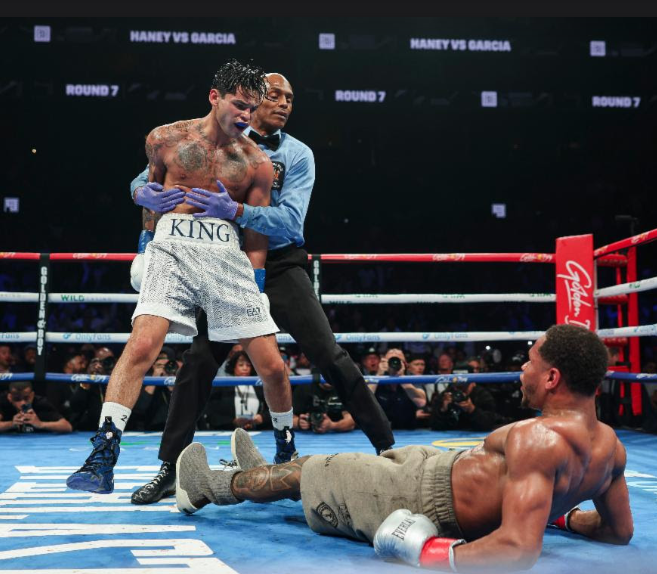
Saturday’s skirmish between Ryan Garcia and WBC super lightweight champion Devin Haney was a messy affair, and yet a hugely entertaining fight fused with great drama. In the aftermath, Garcia and Haney were celebrated – the former for fooling all the experts and the latter for his gallant performance in a losing effort – but there were only brickbats for the third man in the ring, referee Harvey Dock.
Devin Haney was plainly ahead heading into the seventh frame when there was a sudden turnabout when Garcia put him on the canvas with his vaunted left hook. Moments later, Dock deducted a point from Garcia for a late punch coming out of a break. The deduction forced a temporary cease-fire that gave Haney a few precious seconds to regain his faculties. Before the round was over, Haney was on the deck twice more but these were ruled slips.
The deduction, which effectively negated the knockdown, struck many as too heavy-handed as Dock hadn’t previously issued a warning for this infraction. Moreover, many thought he could have taken a point away from Haney for excessive clinching. As for Haney’s second and third trips to the canvas in round seven, they struck this reporter – watching at home – as borderline, sufficient to give referee Dock the benefit of the doubt.
In a post-fight interview, Ryan Garcia faulted the referee for denying him the satisfaction of a TKO. “At the end of the day, Harvey Dock, I think he was tripping,” said Garcia. “He could have stopped that fight.”
Those that played the rounds proposition, placing their coin on the “under,” undoubtedly felt the same way.
The internet lit up with comments assailing Dock’s competence and/or his character. Some of the ponderings were whimsical, but they were swamped by the scurrilous screeching of dolts who find a conspiracy under every rock.
Stephen A. Smith, reputedly America’s highest-paid TV sports personality, was among those that felt a need to weigh-in: “This referee is absolutely terrible….Unreal! Horrible officiating,” tweeted Stephen A whose primary area of expertise is basketball.
Harvey Dock
Dock fought as an amateur and had one professional fight, winning a four-round decision over a fellow novice on a show at a non-gaming resort in the Pocono Mountains of Pennsylvania. He says that as an amateur he was merely average, but he was better than that, a New Jersey and regional amateur champion in 1993 and 1994 while a student New Jersey’s Essex County Community College where he majored in journalism.
A passionate fan of Sugar Ray Leonard, he started officiating amateur fights in 1998 and six years later, at age 32, had his first documented action at the professional level, working low-level cards in New Jersey. The top boxing referees, to a far greater extent than the top judges, had long apprenticeships, having worked their way up from the boonies and Dock is no exception.
Per boxrec, Haney vs Garcia was Harvey Dock’s 364th assignment in the pros and his forty-second world title fight. Some of those title fights were title in name only, they weren’t even main events, but, bit by bit, more lucrative offerings started coming his way.
On May 13, 2023, Dock worked his first fights in Nevada, a 4-rounder and then a 12-rounder on a card at the Cosmopolitan topped by the 140-pound title fight between Rolly Romero and Ismael Barroso. It was the first time that this reporter got to watch Dock in the flesh.
Ironically (in hindsight), the card would be remembered for the actions of a referee, in this case Tony Weeks who handled the main event. Barroso was winning the fight on all three cards when Weeks stepped in and waived it off in the ninth round after Romero cornered Barroso against the ropes and let loose a barrage of punches, none of which landed cleanly. Few “premature stoppages” were ever as garishly, nay ghoulishly, premature.
With all the brickbats raining down on Weeks, I felt a need to tamp down the noise by diverting attention away from Tony Weeks and toward Harvey Dock and took to the TSS Forum to share my thoughts. Referencing the 12-rounder, a robust junior welterweight affair between Batyr Akhmedov and Kenneth Sims Jr, I noted that Dock’s Las Vegas debut went smoothly. He glided effortlessly around the ring, making him inconspicuous, the mark of a good referee. (This post ran on May 15, two days after the fight.)
Folks at the Nevada State Athletic Commission were also paying attention. Dock was back in Las Vegas the following week to referee the lightweight title fight between Devin Haney and Vasyl Lomachenko and before the year was out, he would be tabbed to referee the biggest non-heavyweight fight of the year, the July 29 match in Las Vegas between Terence Crawford and Errol Spence Jr.
The Haney-Garcia fight wasn’t Harvey Dock’s best hour, I’ll concede that, but a closer look at his full body of work informs us that he is an outstanding referee.
—
While the Haney-Garcia bout was in progress, WBC president Mauricio Sulaiman threw everyone a curve ball, tweeting on “X” that Devin Haney would keep his title if he lost the fight. Everyone, including the TV commentators, was under the impression that the title would become vacant in the event that Haney lost.
Sulaiman cited the precedent of Corrales-Castillo II.
FYI: The Corrales-Castillo rematch, originally scheduled for June 3, 2005 and aborted on the day prior when Castillo failed to make weight, finally came off on Oct. 8 of that year, notwithstanding the fact that Castillo failed to make weight once again, scaling three-and-a-half pounds above the lightweight limit. He knocked out Corrales in the fourth round with a left hook that Las Vegas Review-Journal boxing writer Kevin Iole, alluding to the movie “Blazing Saddles,” described as Mongo-esque (translation: the punch would have knocked out a horse). After initially insisting on a rubber match, which had scant chance of happening, WBC president Jose Sulaiman, Mauricio’s late father, ruled that Corrales could keep his title.
Whether or not you agree with Mauricio Sulaiman’s rationale, the timing of his announcement was certainly awkward.
Haney’s mandatory is Spanish southpaw Sandor Martin (42-3, 15 KOs), a cutie best known for his 2021 upset of Mikey Garcia. A bout between Haney and Martin has the earmarks of a dull fight.
To comment on this story in the Fight Forum, CLICK HERE
Featured Articles
In a Shocker, Ryan Garcia Confounds the Experts and Upsets Devin Haney
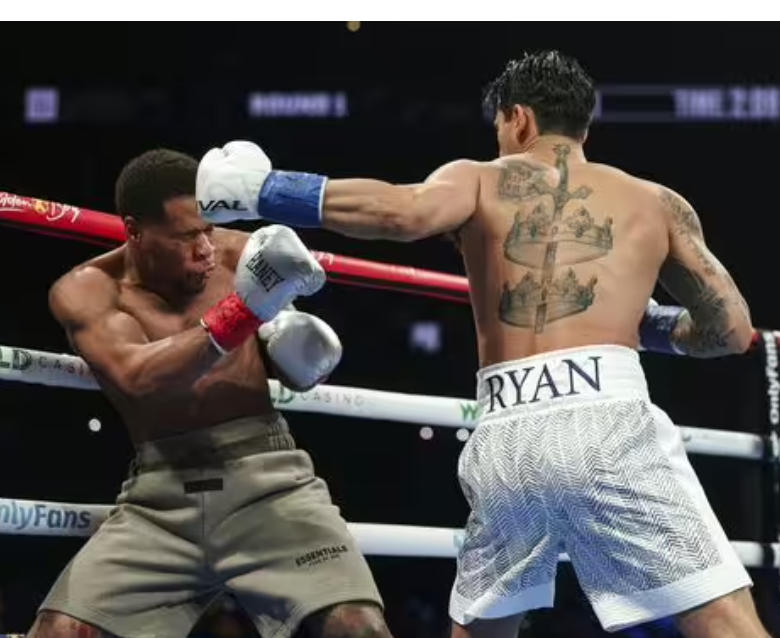
Its good to be crazy. Like a fox.
Ryan “KingRy” Garcia knocked down WBC super lightweight titlist Devin Haney three times to remind everyone of his fighting abilities in winning by majority decision on Saturday.
“I just knew what I could do,” Garcia said.
Fans will not forget the lanky kid from Victorville, California now.
Garcia (25-1, 20 KOs) fooled everyone in playing crazy weeks before the fight, then showed shocking power to hand Haney (30-1, 15 KOs) his first loss as a professional at Barclays Center in Brooklyn.
Haney’s WBC super lightweight title was not at stake for Garcia because he weighed three pounds over the limit.
After Garcia seemingly acting out of control on social media, Haney’s guard must have slipped in the first round during the first few seconds as Garcia connected with that hellish left hook and Haney, with a look of shock in his eyes, almost went down. He barely survived the first round.
“He caught me with it,” said Haney.
During the next few rounds, Haney proceeded to advance toward Garcia seemingly fully aware of the lethal left hook. He used feints and rights to score with a busier approach as Garcia seemed cocked and ready to counter with a left hook.
In the fourth round it seemed Haney was confident he had regained control of the fight, but every time he opened up with more than a two-punch combination Garcia reminded him whose hands were faster and more dangerous.
Though Garcia seldom jabbed he seemed bent on looking for the right moment to unleash his deadly left hook. And every time the Southern California fighter opened up with a combination he scored and Haney dare not exchange.
A few times Haney smiled as if signifying he escaped.
In the seventh round Haney looked to punish Garcia’s body and instead was met with a three-punch combination included a left hook to the chin and down went Haney slumped on the ground. He managed to beat the count and as soon as Garcia came within reach Haney wrapped his arms around him with a python grip. Despite the warnings by referee Harvey Dock, the fallen fighter would not release and Garcia impatiently fired a weak punch during the break. The referee deducted a point from Garcia though he could have deducted a point from Haney for not obeying his instructions to release his hold. Haney actually went down three times in the round but only one was counted by the referee.
From that point on Haney was very cautious but still looking to win by decision.
Though Garcia kept using a shoulder-roll defense that left his body exposed, he would retaliate with three and four punch combinations that usually Haney could defend against other fighters.. But Garcia’s blazing combinations were too fast to defend.
In the 10th round Haney looked to attack and was countered by Garcia’s right and a blinding left hook to the chin and another two blows that sent the former undisputed lightweight champion to the floor again.
It didn’t look good for Haney to survive.
Garcia walked into the 11th round still composed and never out-of-control He dared Haney to exchange and when within striking distance Garcia unleashed another lightning combination and down went Haney again with a defeated look.
Both fighters had fought each other as amateurs six times so there were no surprises between them. But Garcia’s power and speed were superior and that was the difference in a professional fight.
In the final round both were cautious with Garcia’s combination punching proving too dangerous for Haney to open up. Garcia celebrated early as the round ended confident of victory.
After 12 rounds Garcia was seen the victor by majority decision 112-112, 114-110, 115-109.
“You really thought I was crazy,” Garcia told the interviewer and the crowd. “You guys hated on me.”
Other Bouts
Arnold Barboza (30-0) won a curious split decision victory over United Kingdom’s Sean McComb (18-2) in a 10-round super lightweight fight. McComb’s long reach and busy southpaw style gave Barboza trouble. But he managed to win the fight though the crowd was not pleased.
Bektemir Melikuziev (14-1, 10 KOs) defeated France’s Pierre Dibombe (22-1-1) by technical decision after eight rounds due to a cut on his eye from an accidental head butt. It was a very competitive super middleweight fight.
Costa Rica’s David Jimenez (16-1, 11 KOs) outworked John “Scrappy Ramirez (13-1, 9 KOs) in a 12-round scrap to upset the Los Angeles based fighter. After a few close rounds Jimenez simply bullied his way inside and forced Ramirez against the ropes and unloaded his guns.
After 12 rounds two judges saw it 117-111 and 116-114 all for Jimenez.
“I’m a hard-working man from Cartago I come from nothing,” said Jimenez. “My corner told me I had to work inside.”
Charles Conwell (19-0, 14 KOs) stepped on the gas early with vicious body shots and uppercuts and blasted through the resilient Nathaniel Gallimore (22-8-1, 17 KOs) for several rounds. After a brutal fifth and sixth round the referee halted the one-side beating in favor of Conwell who was fighting for the first time under the Golden Boy banner.
Another winner was Sergiy Derevyanchenko (15-5) by decision over Vaughn Alexander (18-11-1) in a super middleweight match.
To comment on this story in the Forum CLICK HERE
-
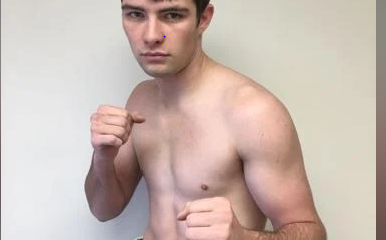
 Featured Articles5 days ago
Featured Articles5 days agoIn a Massive Upset, Dakota Linger TKOs Kurt Scoby on a Friday Night in Atlanta
-
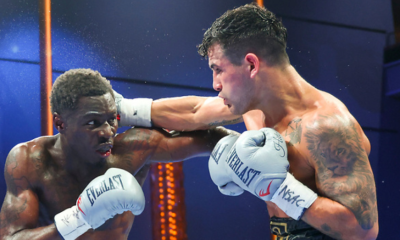
 Featured Articles3 weeks ago
Featured Articles3 weeks agoHitchins Controversially Upends Lemos on a Matchroom Card at the Fontainebleau
-
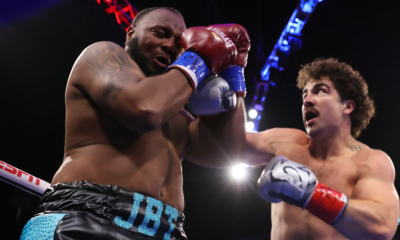
 Featured Articles4 weeks ago
Featured Articles4 weeks agoUndercard Results from Arizona where Richard Torrez Jr Scored Another Fast KO
-

 Featured Articles4 weeks ago
Featured Articles4 weeks agoZurdo Ramirez Accomplishes Another First; Unseats Cruiser Titlist Goulamirian
-
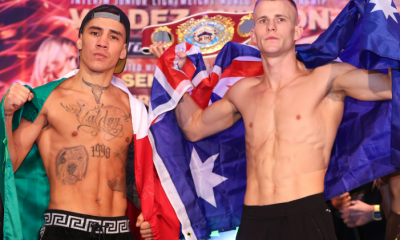
 Featured Articles4 weeks ago
Featured Articles4 weeks agoAvila Perspective, Chap. 278: Clashes of Spring in Phoenix, Las Vegas, and LA
-

 Featured Articles3 weeks ago
Featured Articles3 weeks agoAvila Perspective, Chap. 280: Oscar Valdez, One of Boxing’s Good Guys, and More
-
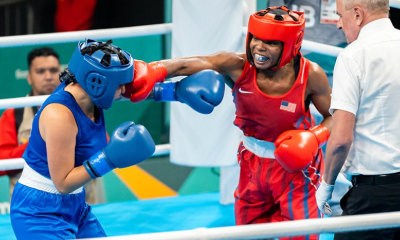
 Featured Articles3 weeks ago
Featured Articles3 weeks agoThe Hauser Report: Literary Notes and More
-
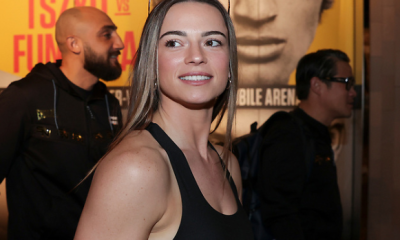
 Featured Articles3 weeks ago
Featured Articles3 weeks agoThe Sky is the Limit for Globetrotting Aussie Featherweight Skye Nicolson

